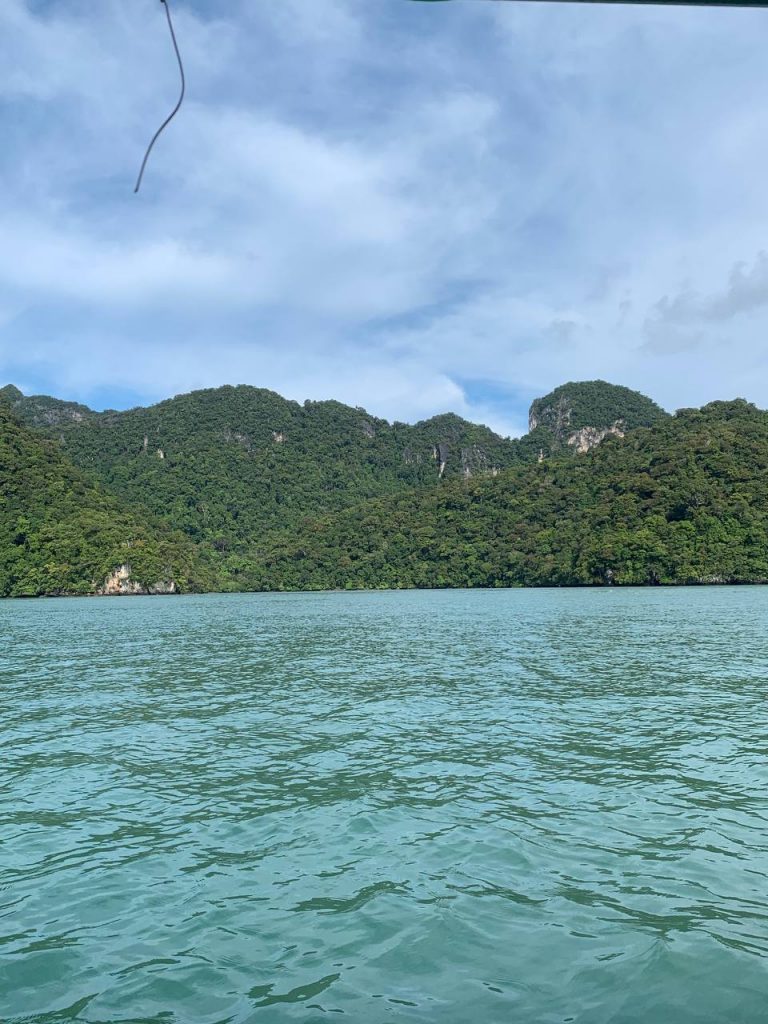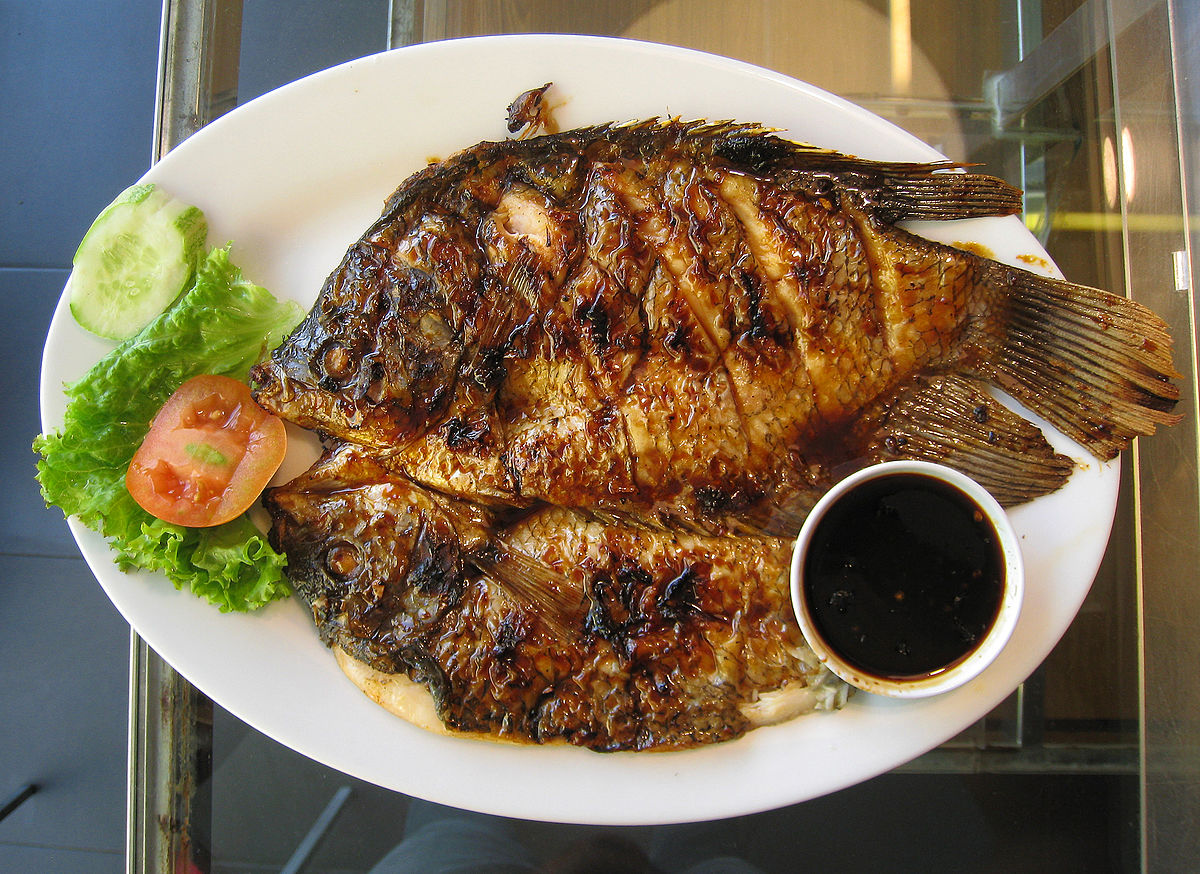The explorer boat take us to the south of Langkawi to explore some of the most beautiful seascapes Malaysia has to offer. Witness sheer limestone cliffs, fjords, and sea stacks majestically rise like ancient temples out the ocean. The porous nature of the limestones is continually exposed to the dehydrating sun wind, salt from the oceans. First visit will be to Pregnant Maiden Island (Pulau Dayang Bunting) next, cruise slowly to Singa Besar Island and spot some Brahminy -Kites and Sea-Eagles along the way. Depending on the tide we will go to Teluk Cawi or Beras Basah Island to enjoy the sunny beach.
PRICE
- RM600 per boat for maximum of 8 passengers.
DETAILS
- Available: Daily
- Time: 9.00am and 3.00pm departure
- Duration: 3 Hours
- Attire: T-shirts, Shorts or Pants, Change of clothes and towel, Sandals or walking shoes and sun protection, waterproof bag for camera and phone
- Numbers: Maximum 12 persons per boats
- Fitness Level: Very Easy
- Inclusive of: English-Speaking Nature Guide, Boat ride with Bimini Cover, Bottle Water
ITINERARY
- 2 Hours: Boat Ride
- 30 min: Visiting Dayang Bunting Island
- 30 min: Swimming at Quiet Beach



Traveling is not only about getting to know new places, people or local nature. Food is also an important part to get to know the place we are staying better. Below we will list a few of the types of food that you must try during your stay in Langkawi.
Rendang
A type of curry stew where the finely chopped meat is cooked with the curry for a long time until it is soaked with flavor and the sauce is practically evaporated. The dish is served with rice and if you like spicier food, you can add sambal sauce.
Ais Kacang
Dessert based on finely chopped ice, poured with sweet fruit syrup with the addition of jelly, corn, peanuts and beans.
Laksa
Something for seafood lovers. It is a type of soup based on fish or prawns, with thick homemade noodles and the addition of, for example, a boiled egg.
Ikan Bakar
It literally means “burnt fish”, but fortunately it is only grilled fish, previously marinated and served with a spicy sauce.
Langkawi is such a small tropical paradise with wide beaches, turquoise waters, stunning sunsets and a jungle interior. The island (actually an archipelago of 104 islets, the largest of which is Langkawi, and 5 others are visible only at low tide) lies in the Andaman Sea, off the northwest coast of the Malay Peninsula.
It is a popular holiday travel destination, also among the Malays themselves. Langkawi is a close neighbor of another Malaysian island – Penang, often visited by tourists (they are only about 3 hours away by ferry).
When is the best time to go to Langkawi?
Langkawi is an island with a very favorable location between the Malaysian mainland and Sumatra (Indonesia), thanks to which the weather conditions are quite mild here. It is hot and humid most of the year with occasional rainfall.
Thanks to the relatively stable climate, you can come here basically at any time of the year and get full satisfaction from your vacation, although the months from November to April are the most recommended. You can expect temperatures of 30 to 35 ° C during the day, and around 28 ° C at night.
The peak tourist season in Langkawi is from January to March – the sea is also the calmest then, which is conducive to all water sports and fun.
Between April and August, although there are cloudy skies, rainfall and even thunderstorms, you can also enjoy a dream vacation in Langkawi – rainstorms are usually short-lived, occur in the afternoon and cool down pleasantly. Off-season vacations also mean, as always, smaller crowds and lower prices.
The monsoon season with heavy rainfall falls between September and October. Even in the rainy season on Langkawi, there is no shortage of attractions, so do not be too afraid of them, which we always strongly urge you to do! It rains about 2 hours in the afternoon, and during the day you can enjoy the sun for about 7 hours. The advantages of the rainy season are more pleasant temperatures (approx. 27 ° C) and lush, lush nature, the disadvantage – the sea will be more restless then, which may limit some water activities.
What to do in Langkawi?
Langkawi offers a wide range of experiences, including:
- Cruising
- Birdwatching
- Kayaking
- Trekking
- Massages & SPA
- ..and much, much more!
Are you interested?
Check also other experiences!
Let us know if you want us to organize an experience especially for you
Going on vacation, but you don’t want to lie on the beach for another year in a row? You can snorkel! What is snorkeling and what do you need for it? What safety measures you should take to snorkel responsibly? We’ll explain everything to you in the article below!
Snorkeling – what is it?
Snorkeling means that a swimmer equipped with a mask, snorkel and fins, while floating on the surface of the water, observes the underwater life.
No special qualifications are needed for snorkeling. The activity itself is child’s play – by submerging your head under the water, you can freely admire the beauty of the underwater world. You take in the air with the snorkel in your mouth or with the snorkel built into your mask (depending on what type of equipment you choose).
Snorkeling does not require good swimming skills (but you have to take care of safety – more on that in a moment). It is enough to just go into the water and dip your face under the surface, protected with the mask.
What to remember while snorkeling?
Remember that snorkeling is only supposed to provide you with pleasure, so try to relax, but also choose the time and place responsibly. Before you go out to snorkel, check the sea conditions (e.g. if there are no large waves or strong currents) and choose a quiet place. The shallow waters of the cove beaches are usually great places for your first snorkeling trip.
Snorkeling safety
Snorkeling is a very pleasant form of recreation and at the same time, to keep it safe, you should remember a few rules.
- When floating on the surface in the sun, it is worth wearing a short wetsuit or a T-shirt with a UV filter. This way you will avoid burns, which can be very unpleasant.
- If you’re not swimming too well, it’s worth equipping (or borrowing) a snorkeling vest. It will increase safety, as it can be inflated when needed and stay calmly afloat. It may be needed when you get tired and away from the shore or you get a cramp.







